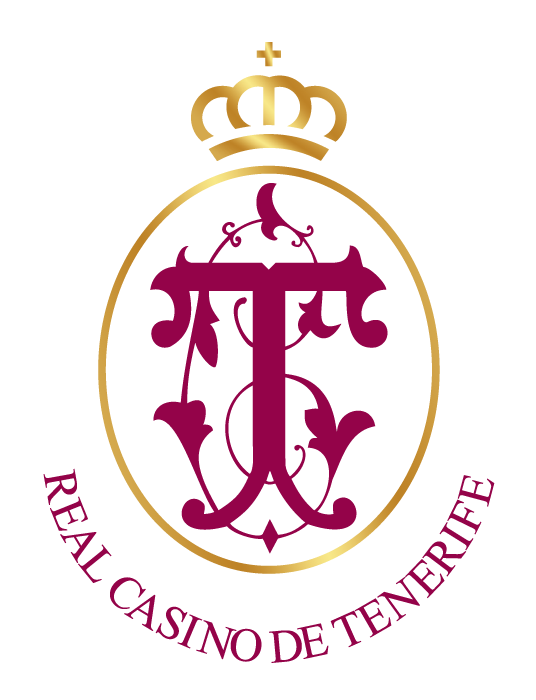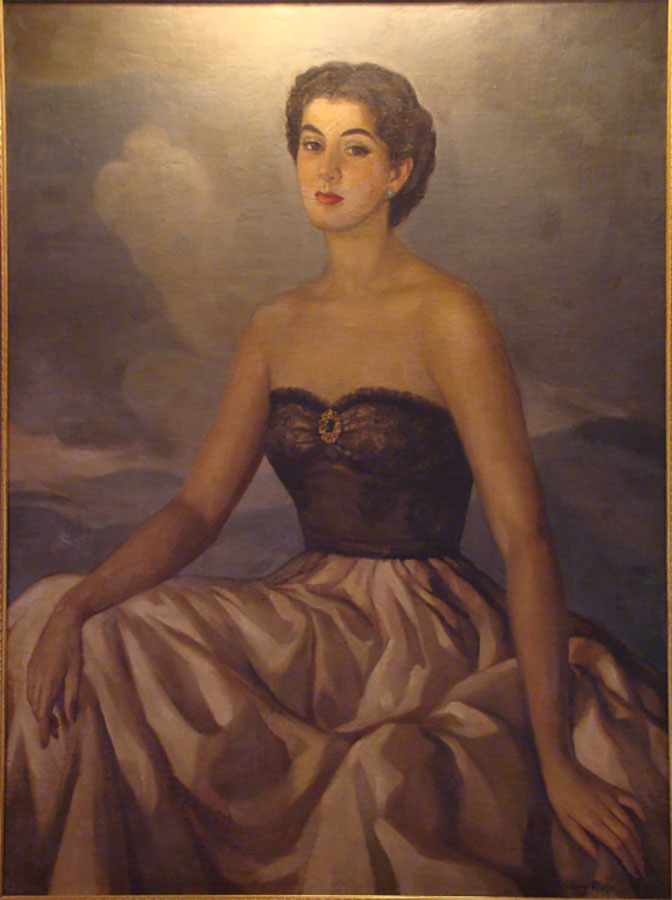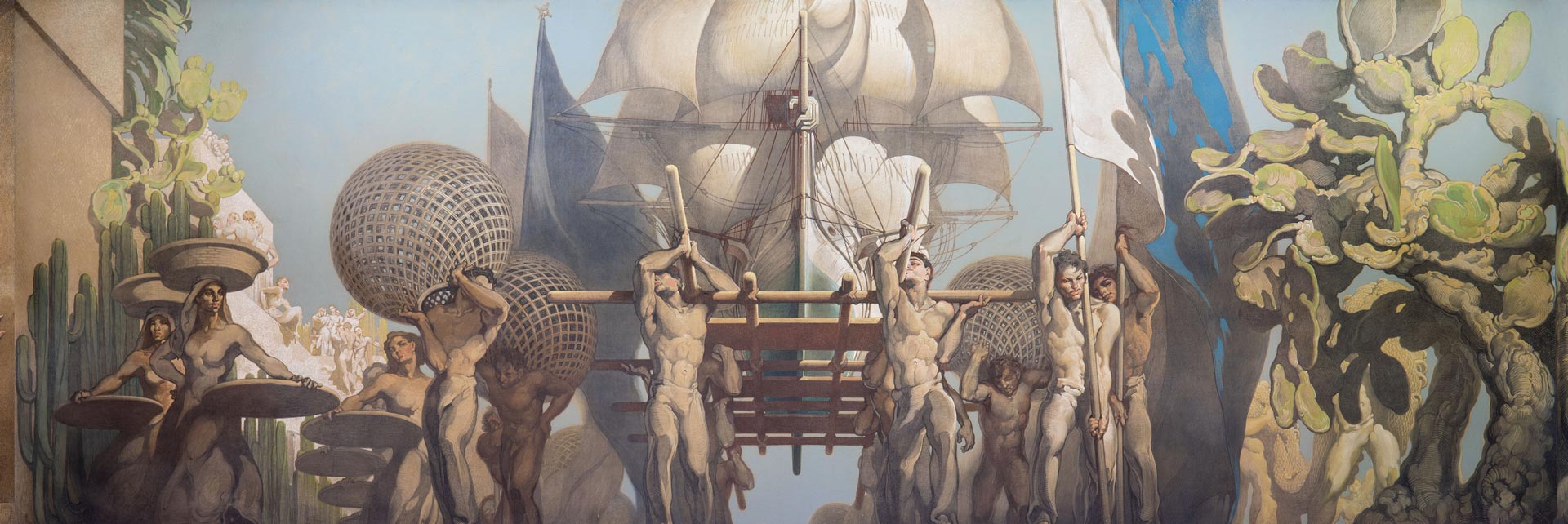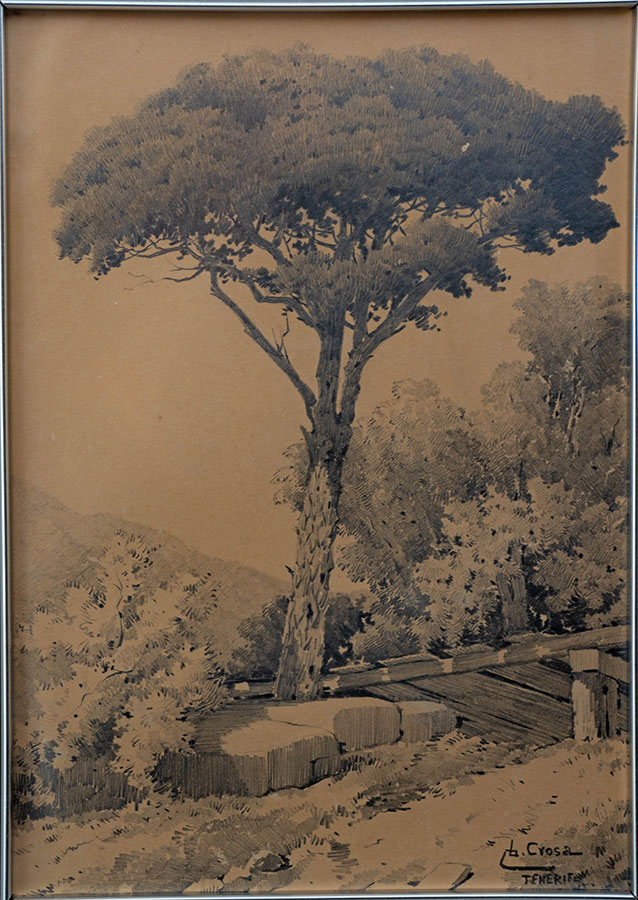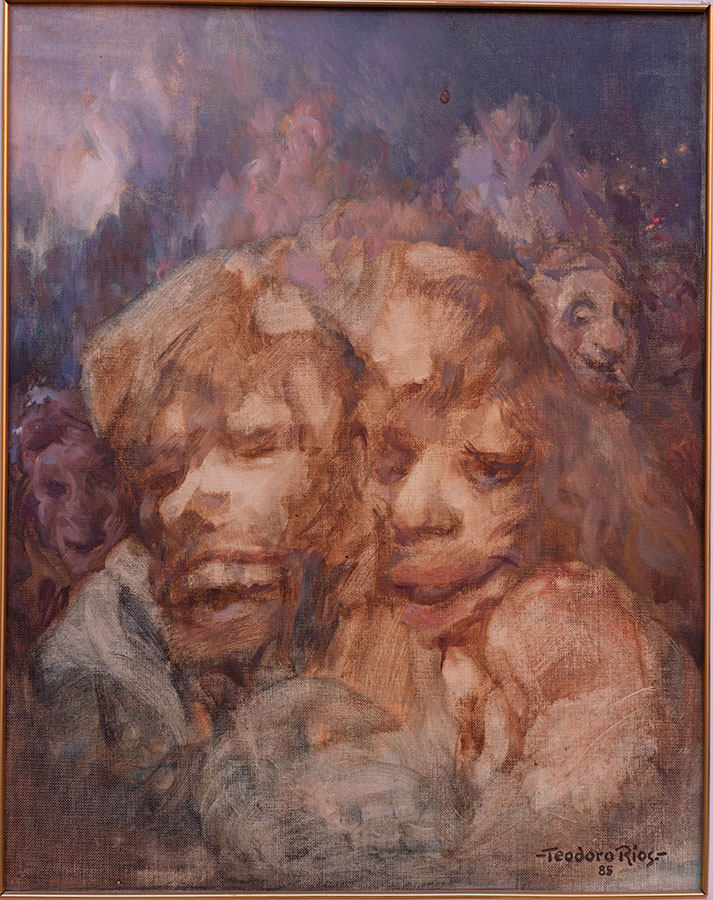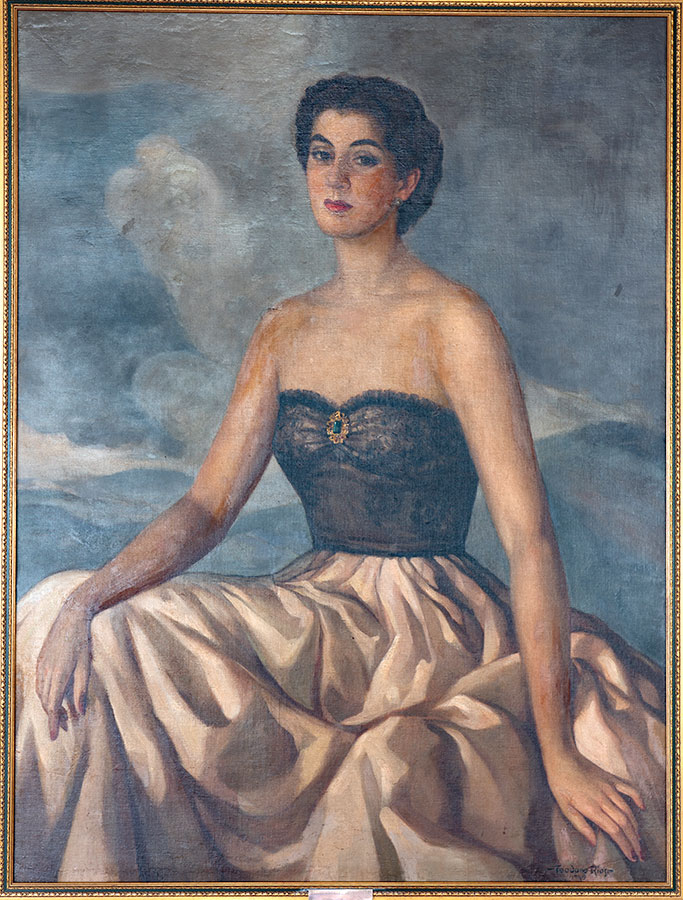
- Type of work: Easel painting
- Technique: Oil on canvas
- Approximate dimensions: 127 x 95 cm
- Subject: Portrait
- Title:. Portrait of Mrs. Alicia Navarro I
- Author: Teodoro Rios (1917-1992)
- Chronology or Year: 1949
- Historical-artistic analysis:
Style: Portrait within the realism, since observing the model from life, he tries to get the best physical resemblance of the represented.
Description: This is a seated portrait, turned slightly to the left, of a young woman, elegantly attired, directing her gaze to the viewer, situated in the foreground, with an open landscape in the background, the sky of which occupies the upper half of the painting. With great mastery of the drawing, where the delicacy of the line stands out, supported by a rich chromatic range of ochre tones that contrast with the grays and blues of the background landscape, with special importance given to the light, he has managed to enhance the beauty of the portrayed, Alicia Navarrro Cambronero, as well as the plasticity and richness of her clothing, especially in the treatment of the fabric and quality of the satin of the skirt, with special attention paid to the hands. All these elements, together with the elegant attitude of the sitter, underline the high social status of the character.
Date of reception: It became part of the Casino’s collection of paintings around September 1995, donated by Sr. Thales Papadopoulos, husband of the former Miss Casino 1931, Alicia Navarro Cambronero, and it was agreed in the Board of Directors of October of that year to express deep gratitude for this.
Observations: This portrait was made by Teodoro Ríos shortly after arriving in Cuba in 1949 and settling in Havana, where he carried out an intense work as a portraitist, posing for him, among others, Dulce María Loynaz and the wife of Cuban President Prío Socarrás. She was then living in Havana with her husband Manuel Felipe Camacho, the Canary Islander Alicia Navarro, a couple with whom she was friends during the 10 years that the painter lived in Cuba.
About the author: Teodoro Ríos Rodríguez (Cabaiguán, Cuba, 1917 – Santa Cruz de Tenerife, 1992), son of emigrant palmeros in Cuba, moved to La Palma in 1932, beginning his artistic studies that year at the Escuela de Artes y Oficios de Santa Cruz de la Palma, which he continued the following year at the Círculo de Bellas Artes de Santa Cruz de Tenerife under the teachings of Francisco Bonnín. With a scholarship from the City Council of Santa Cruz de la Palma, he furthered his training in Madrid, at the San Fernando School of Fine Arts, under the tutelage of Chicharro and Benedito. After the parenthesis of the Civil War, period in which he remained in the islands, participating in the collective exhibitions organized by the Círculo de Bellas Artes of Santa Cruz, in 1941 he travels to Madrid as a set designer for the theater company of Nicolás Navarro, In 1941 he traveled to Madrid as a stage designer for the theater company of Nicolás Navarro, where he settled and began his work as a portraitist, the facet with which he gained the greatest reputation, which, together with watercolor landscapes and some still lifes, he soon began to exhibit, both at the Círculo de Bellas Artes in Santa Cruz de Tenerife (1942) and in the Salas of the capital of Spain. He also participated in the First Exhibition of Artists of Tenerife in Madrid (1943) and in collective exhibitions of watercolorists in the First Watercolor Exhibition (1945), linking himself since then with this group, This explains his participation in the foundation of the Agrupación Española de Acuarelistas and in the Agrupación de Acuarelistas Canarios since his first exhibition at the Círculo de Bellas Artes in Tenerife in 1947, year in which one of his watercolors was selected for the Salón Internacional Hispano-portugués de la Acuarela under the organization of the Ministry of Foreign Affairs in Madrid. Together with Mariano Cossío, he received the 2nd Medal in the 1st Regional Painting Exhibition and the third prize in the regional still life contest organized by the Círculo de Bellas Artes in 1948. His restless spirit motivated his departure to Cuba, settling with his wife and children in Havana until 1959. During this period he developed a great activity as a portrait painter, building a great reputation in this facet as well as in fresco painting with the murals he was commissioned for the General Staff of the Navy and the National Hospital of Havana. The revolution forces him to return to Tenerife in 1959, joining again the artistic scene with solo exhibitions at the Círculo de Bellas Artes (1960, 1963, 1963, 1966, 1972, 1990) and in other institutions such as the Casino de Tenerife in 1983 and 1985, Sala Angaed in Laguna (1991), not remaining indifferent to the struggle between the new and the old, between academic tradition and avant-garde ideas, which took place in the artistic environment of the islands, responding ironically with the series Emancipaciones Plásticas shown at the Café El Águila during the 1962 carnivals. He continued his relationship with the Agrupación Acuarelistas Canarios with whom he exhibited in Puerto Rico in 1968 – in 1978 he became a member of the Academy of Arts and Sciences of that country – of which he was Vice President in 1981, until his death in 1992, receiving precisely his first tribute from that Association with the exhibition organized in the Museum of Fine Arts of Santa Cruz de Tenerife shortly after his death.
Bibliography:
Archive of the Casino de Tenerife. Minutes J.D. October 5, 1995
Catalog Teodoro Ríos Anthological Exhibition. La Recova Art Center March 31-May 15, 1993. Ayuntamiento de Santa Cruz de Tenerife-Viceconsejería de Cultura y Deporte del Gobierno de Canarias, 1993. (Texts by Carmen González Cossío).

